Hengist And Horsa: Legendary Anglo-Saxon Warrior Brothers And Leaders Of First Settlers In Britain
A. Sutherland - AncientPages.com - According to very ancient poems, Odin's sons, Weldegg, Beldegg, Sigi, Skiold, Sæming, and Yngvi, became kings of Franconia, East Saxony, West Saxony, Sweden, Denmark, and Norway, and from them are descended the Saxons, Hengist and Horsa, and the royal families of the Northern lands.
 Hengist and Horsa arriving in Britain, by Richard Rowlands (1605). Public Domain
Hengist and Horsa arriving in Britain, by Richard Rowlands (1605). Public Domain
But one question is: who were the legendary warrior brothers Hengist and Horsa? Interesting is also whether they existed.
According to Anglo-Saxon tradition, these two heroes, Hengist and Horsa (meaning 'stallion' and 'horse'), were invited to Sub-Roman Britain by the British ruler Vortigern to help him defend against invading Scots and Picts attacking from the North.
After landing at "Wippidsfleet" (Ebbsfleet), Hengist and Horsa successfully drove off the invaders. It is said the two heroes played an essential part in the foundation of the kingdom of Kent.
Immediately after successfully fighting with the enemy, they received a land grant in Kent from Vortigern.
Hengist from John Speed's 1611 "Saxon Heptarchy". Image credit: Professor Liam Thompson - Public Domain
For ages after the arrival of the Saxons under the warlords Hengist and Horsa in 449 AD, the aboriginal inhabitants possessed the whole western coast of Britain. These people were engaged in continuous battles with the invaders.
Archaeological evidence has revealed traces of Germanic settlers in Canterbury in the late 300s; however, the main settlement probably took place in the 450s, under the leadership of the two warlord brothers, Hengest and Horsa.
Some historians have suggested that they are only mythical founding figures, divine twins like Romulus and Remus, rather than real people.
Hengest (also spelled Hengist) and Horsa are said to have been Jutes and sons of Wihtgils, a semi-legendary Jutish chieftain, according to the Anglo-Saxon Chronicle, one of the few literary sources for England's history during the period following the Roman presence and preceding the Norman invasion.
The brothers in Edward Parrott's Pageant of British History (1909). Image credit: Sir Edward Parrott - The Pageant of British History - Public Domain
According to the English historian and theologian Bede, the two brothers were Jutes, generally assumed to have come from Jutland in Denmark.
Hengest and Horsa arrived shortly after 449 with three shiploads of 'Angles or Saxons' at the invitation of Vortigern, king of the Britons (who flourished 425–450). They came to his allies to help him against the Picts, attacking from the North between 446 and 454 AD.
It needs to be specified, however, where, in Britain, this Vortigern had his seat. Was it located in the northwest, closer to the Picts region, or in the south?
The Chronicle also says that Hengest and Horsa fought against Katigern, the second son of Vortigern, near Epiford, and Horsa was killed at Aegelsthrep (possibly Aylesford, Kent) in 455.
The Venerable Bede mentions a monument to him located in east Kent; Horstead, near Aylesford, may be named for him; the Chronicle says that Hengist began to reign in 455 and that he fought against the Britons; it implies that Hengist died in 488.
Updated on Sep 19, 2023
Written by A. Sutherland - AncientPages.com Staff Writer
Copyright © AncientPages.com All rights reserved. This material may not be published, broadcast, rewritten or redistributed in whole or part without the express written permission of AncientPages.com
Expand for referencesReferences:
B. Yorke, Kings and Kingdoms of Early Anglo-Saxon England
More From Ancient Pages
-
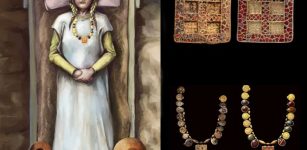 Mystery Of The Anglo-Saxon Harpole Burial Continues – New Clues
Archaeology | Dec 14, 2023
Mystery Of The Anglo-Saxon Harpole Burial Continues – New Clues
Archaeology | Dec 14, 2023 -
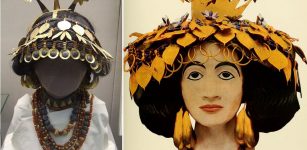 Mysterious Sumerian Queen Puabi And Her Magnificent Underground Burial Complex – Many Followed Her To Afterlife
Featured Stories | Oct 20, 2016
Mysterious Sumerian Queen Puabi And Her Magnificent Underground Burial Complex – Many Followed Her To Afterlife
Featured Stories | Oct 20, 2016 -
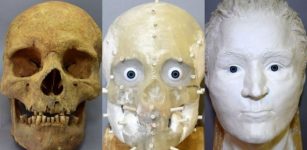 Face Of Man From The Lost Medieval Village Of Dzwonowo Reconstructed Using 3D Printing Technology
Archaeology | Jul 20, 2020
Face Of Man From The Lost Medieval Village Of Dzwonowo Reconstructed Using 3D Printing Technology
Archaeology | Jul 20, 2020 -
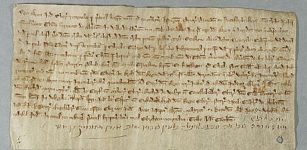 York’s Thriving Medieval Jewish Community – New Study
Archaeology | Aug 22, 2023
York’s Thriving Medieval Jewish Community – New Study
Archaeology | Aug 22, 2023 -
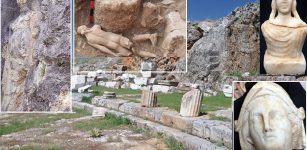 Sculptures Of Kybele, Athena, Hekate, Apollo Unearthed At Hellenistic Site Of Pisidia Antiocheia, Turkey
Archaeology | Oct 15, 2017
Sculptures Of Kybele, Athena, Hekate, Apollo Unearthed At Hellenistic Site Of Pisidia Antiocheia, Turkey
Archaeology | Oct 15, 2017 -
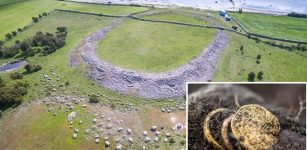 Gold Coins Shed Light On The Mystery Of Sandby Borg And Massacre On The Swedish Island
Archaeology | Oct 16, 2017
Gold Coins Shed Light On The Mystery Of Sandby Borg And Massacre On The Swedish Island
Archaeology | Oct 16, 2017 -
 Raven Mocker And Cannibal Body Snatchers In Cherokee Mythology
Featured Stories | Jun 13, 2019
Raven Mocker And Cannibal Body Snatchers In Cherokee Mythology
Featured Stories | Jun 13, 2019 -
 Magnificent Pagodas In Indein Village And Undiscovered Secrets In The Myanmar Jungle
Featured Stories | Oct 9, 2020
Magnificent Pagodas In Indein Village And Undiscovered Secrets In The Myanmar Jungle
Featured Stories | Oct 9, 2020 -
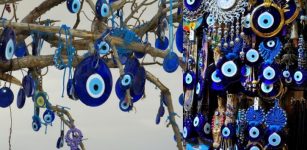 Nazar Amulet – Blue Color Wards Off The Evil Eye According To Ancient Belief
Ancient Symbols | Mar 13, 2018
Nazar Amulet – Blue Color Wards Off The Evil Eye According To Ancient Belief
Ancient Symbols | Mar 13, 2018 -
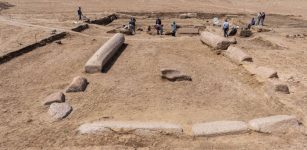 Ancient Temple Dedicated To God Zeus Discovered In Sinai, Egypt
Archaeology | Apr 26, 2022
Ancient Temple Dedicated To God Zeus Discovered In Sinai, Egypt
Archaeology | Apr 26, 2022 -
 Finds From Archaeological Dig Were Deliberately Hidden From The Public, Says Man Who Participated In The Excavations
Featured Stories | Dec 3, 2024
Finds From Archaeological Dig Were Deliberately Hidden From The Public, Says Man Who Participated In The Excavations
Featured Stories | Dec 3, 2024 -
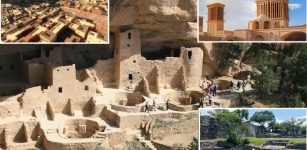 5 Lessons From Ancient Civilizations For Keeping Homes Cool In Hot, Dry Climates
Featured Stories | Sep 16, 2024
5 Lessons From Ancient Civilizations For Keeping Homes Cool In Hot, Dry Climates
Featured Stories | Sep 16, 2024 -
 Graeae: Three Sisters Of Fate Who Shared One Eye And Tooth In Greek Mythology
Featured Stories | Jun 8, 2016
Graeae: Three Sisters Of Fate Who Shared One Eye And Tooth In Greek Mythology
Featured Stories | Jun 8, 2016 -
 Cherokee Gourd Rattles – Protection Against Evil Spirits And Other Danger
Ancient Traditions And Customs | Jun 7, 2019
Cherokee Gourd Rattles – Protection Against Evil Spirits And Other Danger
Ancient Traditions And Customs | Jun 7, 2019 -
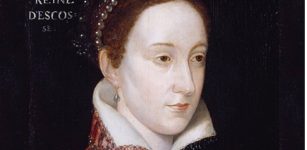 Codebreakers Crack Secrets Of The Lost Letters Of Mary, Queen Of Scots
News | Feb 8, 2023
Codebreakers Crack Secrets Of The Lost Letters Of Mary, Queen Of Scots
News | Feb 8, 2023 -
 Untold Story Of The Glencoe Massacre In 1692 Revealed By Archaeologists In Scotland
Archaeology | Dec 18, 2024
Untold Story Of The Glencoe Massacre In 1692 Revealed By Archaeologists In Scotland
Archaeology | Dec 18, 2024 -
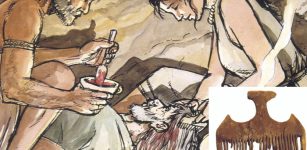 Evidence Of Hallucinogenic Drug Use During Bronze Age Ceremonies Found
Archaeology | Apr 6, 2023
Evidence Of Hallucinogenic Drug Use During Bronze Age Ceremonies Found
Archaeology | Apr 6, 2023 -
 Long-Standing Mystery Of What May Have Triggered Ice Age Solved – New Study
Archaeology | Jun 24, 2022
Long-Standing Mystery Of What May Have Triggered Ice Age Solved – New Study
Archaeology | Jun 24, 2022 -
 Who Were The Goths And Where Did They Come From?
Civilizations | Apr 16, 2019
Who Were The Goths And Where Did They Come From?
Civilizations | Apr 16, 2019 -
 Ancient Tomb Of ‘Bird Oracle Markos’ Unearthed In Bergama (Pergamon), Turkey
Archaeology | Sep 6, 2022
Ancient Tomb Of ‘Bird Oracle Markos’ Unearthed In Bergama (Pergamon), Turkey
Archaeology | Sep 6, 2022


